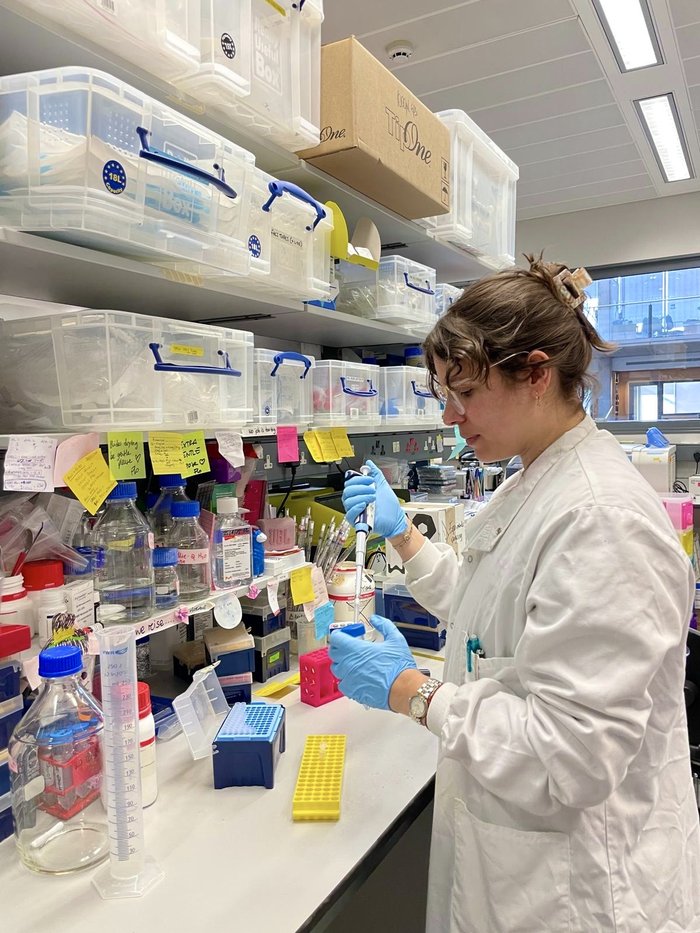Using special cells in the bone marrow to help improve treatment of AML
Acute myeloid leukaemia (AML) is a fast-growing type of blood cancer. Dr Tissot and her team plan to study special cells in the bone marrow to help predict treatment outcomes and develop better treatments for people with the disease.

Dr Floriane Tissot
The challenge
AML is a fast-growing type of blood cancer that starts in the bone marrow. It begins when something goes wrong in the instruction manual of blood stem cells. This results in changes in their DNA causing them to grow and divide uncontrollably. As the cancer cells grow and divide, they can change their environment to help them survive and evade detection. A group of special cells in the bone marrow, called cancer-associated fibroblasts (CAFs), have been found to help the leukaemia cells grow and are able to survive and evade detection. This makes the cancer harder to treat. CAFs are a complex group of cells and currently little is known about how they work. Understanding how they work in AML will be an important step toward developing new and better ways to treat the disease.
The project
In this project, Dr Tissot and her team will study CAFs in AML before and after chemotherapy. They will conduct lab-based experiments to identify the different types of CAFs and examine how they respond to treatment. Using advanced techniques, they will seek to understand where these CAFs are located and their role in AML. They then plan to the use this knowledge to predict treatment outcomes and help develop better treatments for the disease.
The future
If successful, researchers will gain a better understanding of the different types of CAFs located in the bone marrow of people with AML. This could help them to identify new ways of predicting how well a patient is likely to respond to treatment. Importantly this knowledge could help healthcare professionals select the best treatment option for their patients. This research could lead to the development of new and better treatments where CAFs are targeted with specific drugs, so they no longer help the cancer to grow, survive and evade detection.
